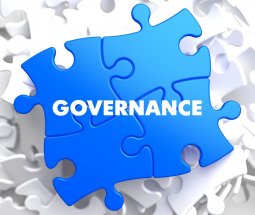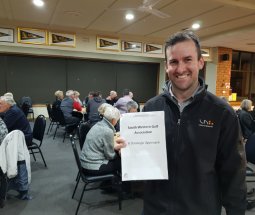Developing Policies and Procedures
What is the difference?
A policy is generally described as a statement of intention that guides consistent actions within the club and supports decision-making at all levels e.g. your sport may have a Heat Policy that prohibits play over a certain temperature. This makes decisions about cancellation straight forward and consistent regardless of who is making the call. The policy does not usually spell out what actions will be undertaken to carry out the intention (that is where the procedures come in) but concentrates on the intention and why. For example:
Example Coaching Policy Statement
_____________ Club will ensure that all coaches have completed and/or have a current recognized Level 1 Coaching Accreditation prior to the commencement of their coaching role. The course/accreditation fees will be met by the Club.
The Committee encourages coaches to extend their coaching accreditation beyond Level 1 and will review applications for financial support on a case by case basis.
This policy applies to all Coaches and Assistant Coaches.
Example Principle Statement (the why)
This policy recognizes the importance of quality coaching in developing and retaining our players and for on field success. The coaching accreditation attainment will support quality assurance in the provision of coaching and is considered a minimum requirement by our state body.
Procedures
- All members intending / willing to coach a side should lodge an Expression of Interest Form with the Coaching Coordinator by…….
- Appointments will be made by….. and Coaches will be informed by email
- In the case where there is more than 1 person interested for a team, the Committee will make the appointment based on coaching credentials and relevant experience
- All coaches for the coming season will be informed of Coaching Courses on offer and will be required to enroll for one
- Completed Registration Forms for a course should be given to the Coaching Coordinator no later than 2 weeks prior to the Course Date for payment to be organized
……….. and so on.
Policy Development: Some Considerations
- Your affiliate may have a range of policies, bi-laws that you are expected to follow. Your Committee should be aware of these and communicate these to the relevant people in your Club
- Is the policy direction consistent with the rules set out in your Constitution
- Developing a policy is not a frivolous exercise that can be undertaken at the whim of a few. The process requires consultation and, depending on the impact of a policy decision, may require a voting procedure. See some guiding steps below.
- There is a large pool of policy samples to use as a starting point, however, it is important that the policies and procedures you end up with suit your organisation and reflect realistic practice.
- Policy, procedures and practice are interrelated and need to reflect each other. For example, if you have a policy regarding the wearing of certain safety equipment by juniors, the coaches must abide to this. This may also be supported by an inclusion of the statement in a Season Start notice to players and parents.
- Improving practice can be as simple as reminder notices on the wall e.g. Canteen notice that reminds all volunteers about the wearing of gloves, washing hands. Volunteer induction and resources also support consistency in practice.
- Policy and Procedures must come to “life” to be effective as opposed to becoming a folder that sits on a shelf. They are a statement of intention that must be communicated to everyone in the club and should be reviewed annually.
Some Basic Steps
Step 1: Define the Issue, Problem or Improvement The process of policy development begins with recognizing the need for written policy. The Committee is not alone in defining needs. Feedback from players, parents, local residents etc may be the driver. Step 2: Gather Information
- Does your affiliate already have a policy or an example from another Club
- Ask around the members to get a feel for the reaction
- Look at your Constitution to see that the intentions are consistent with your rules
Step 3: Discuss and Debate at Committee Level (include input of affected parties)
Step 4: Draft Policy After consensus on policy content, develop a draft, with consideration for the procedures that would need to accompany.
Step 5: Gather Feedback and Make Revisions Distribute to members, this may even require a Special Meeting
Step 6: Adopt the Policy / Develop Procedures The Constitution will articulate the powers of the Committee and the requirements for decision-making to be followed here. Once adopted, the procedures need to be developed, preferably by the most hands-on to the issue/improvement measure.
Step 7: Distribute and Communicate To ensure that policy becomes practice, it must be communicated in practical terms as broadly as possible.
Step 8: Oversee and Review How well is the policy being implemented? Are there procedural changes or additions needed? Is it being communicated to the people who count?

.jpg)

